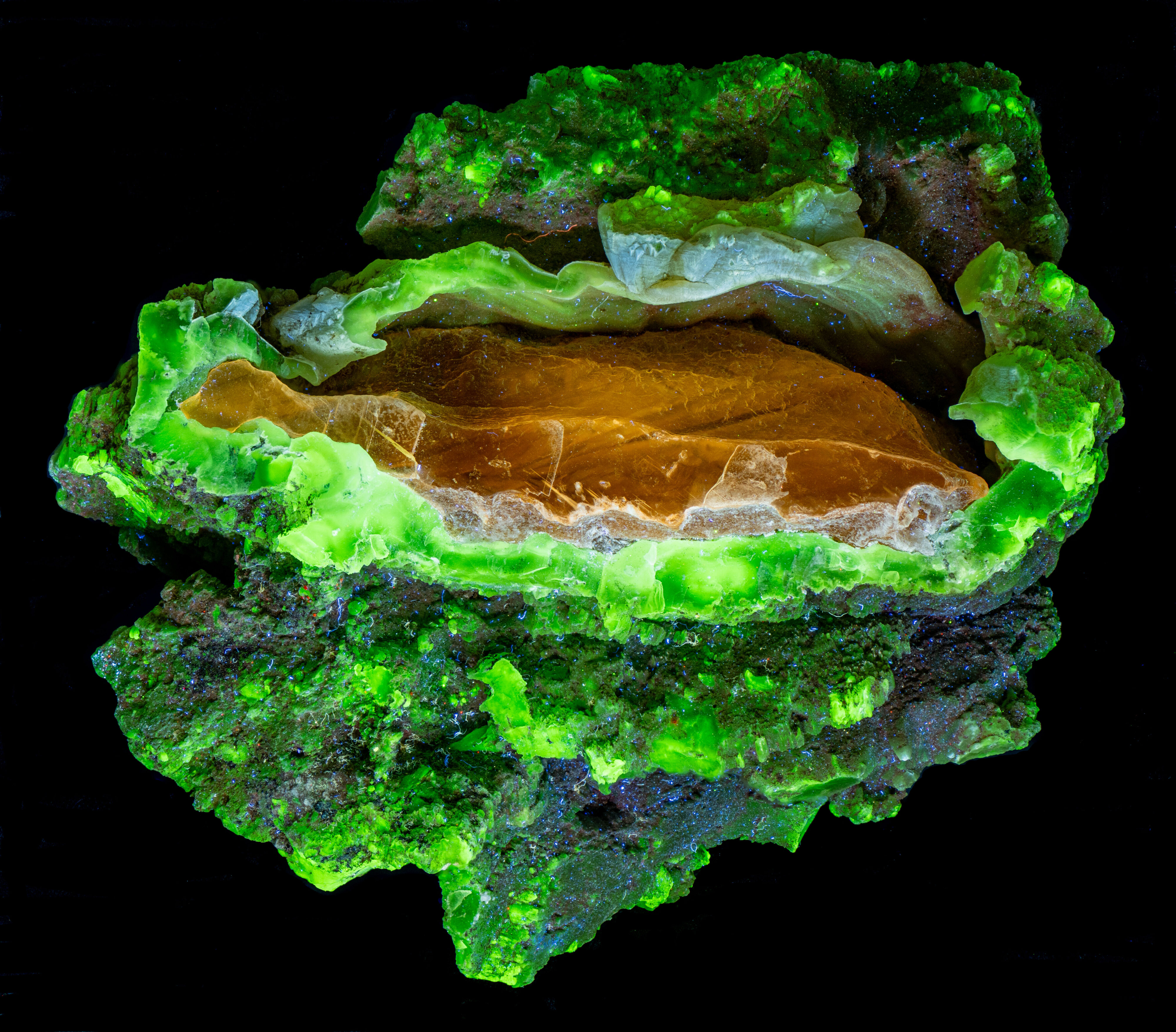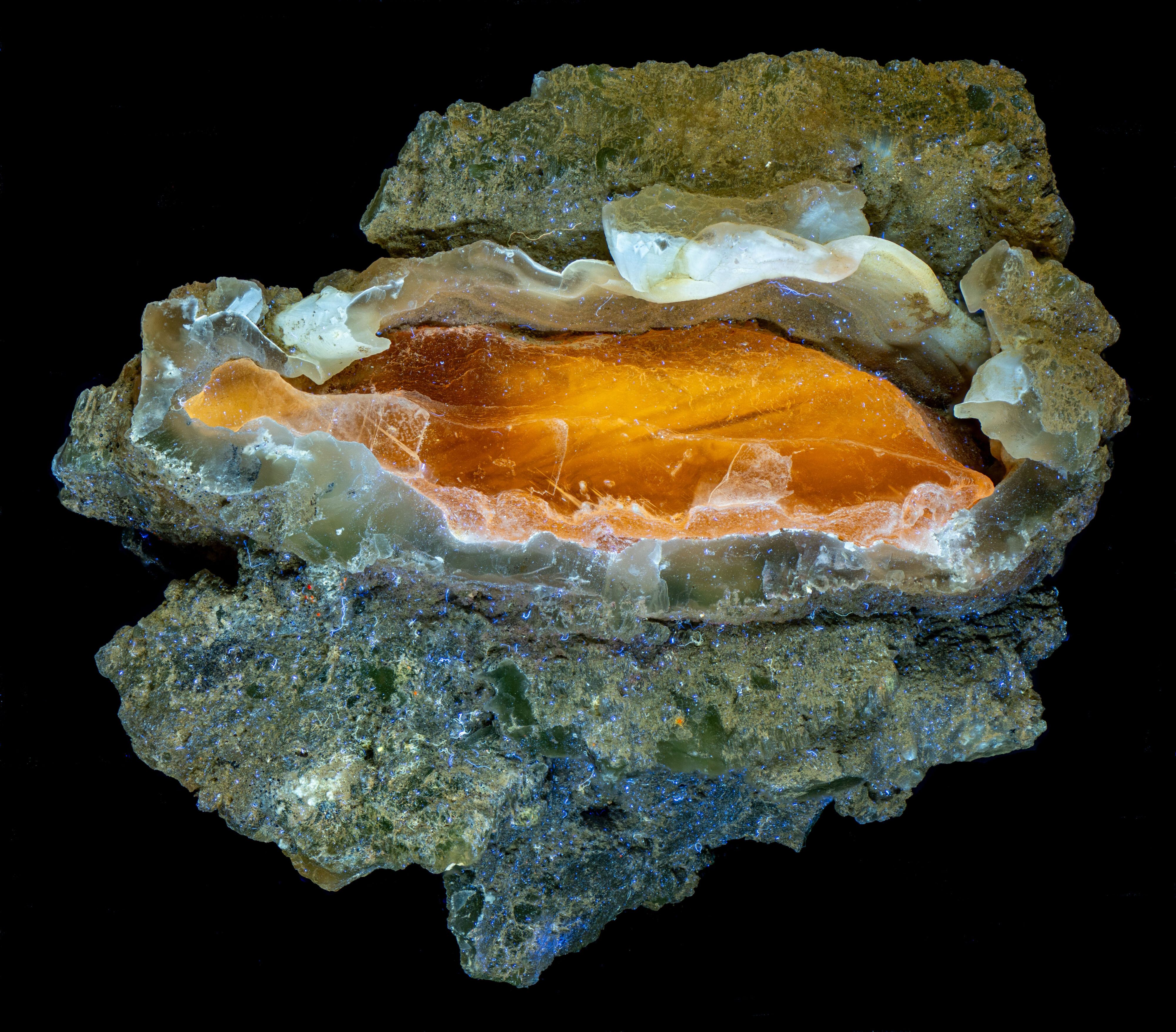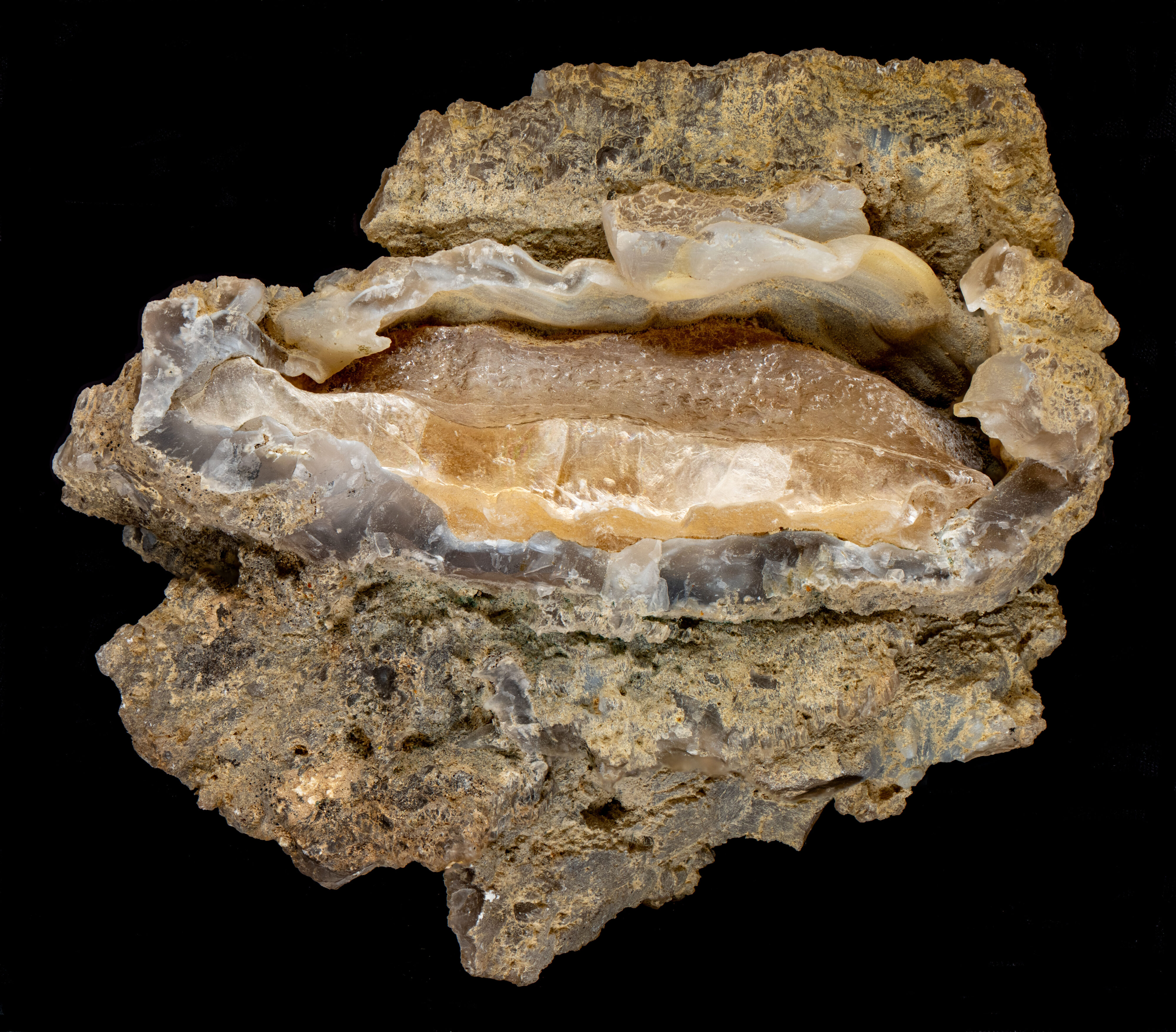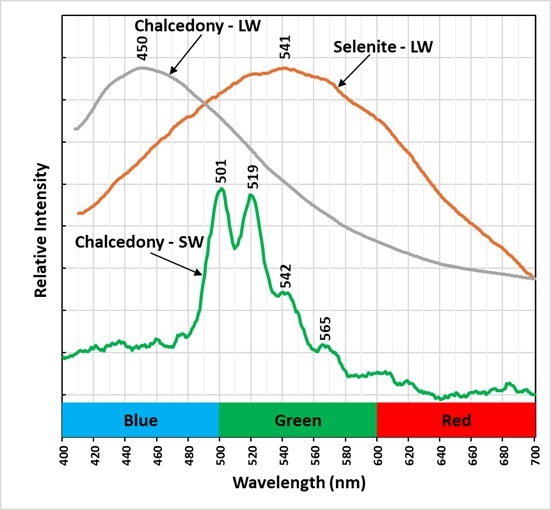Selenite and Chalcedony from Nebraska
Contributed by: Michael Crawford
Date: Aug 7th, 2025
Locality: Sioux County, Nebraska, USA (See on Mindat)
Size: 7.5 x 7.5 cm
Description:
This is a specimen of gypsum var. selenite and chalcedony. It comes from Sioux County, Nebraska. Sioux County is best known in the fluorescent world as a source for “watermelon” rock. Watermelon rock is a brightly fluorescent rock that is composed of a core of calcite and between two layers of chalcedony. The calcite fluoresces red and the chalcedony fluoresces green under shortwave illumination. This selenite-chalcedony specimen is like watermelon rock with a core of selenite surrounded by chalcedony. The chalcedony fluoresces green in both rocks. The selenite fluoresces orange and is brightest under longwave illumination. The chalcedony is brightest under shortwave light, and it is pale green and off white under longwave light. In keeping with the melon theme, this selenite-chalcedony combination from Sioux County should be called “cantaloupe” rock.
The longwave emission spectrum of the selenite is a very broad peak with a maximum at 541 nm. The chalcedony longwave spectrum is also a broad spectrum with a maximum at 450 nm. The longwave fluorescence of both minerals is likely activated by organics. The shortwave emission spectrum of the chalcedony is very different. Green fluorescence is activated by the linear uranyl ion. The spectrum has four vibronic peaks at 501nm, 519 nm, 542 nm and 565 nm.
Summary of luminescence responses:
Gypsum var. Selenite (Mindat) (RRUFF)
- Fluorescence under Longwave (365nm LED) UV light: Orange
- Fluorescence under Shortwave (255nm LED) UV light: Orange
- Fluorescence under Shortwave (255nm LED) UV light: Green




